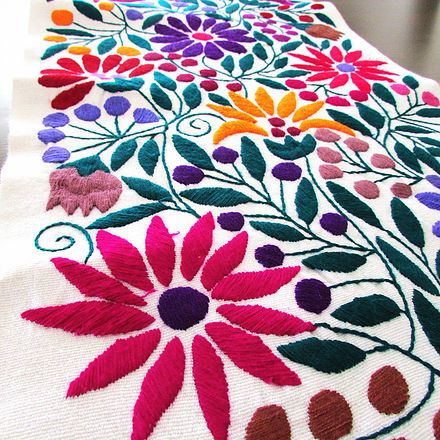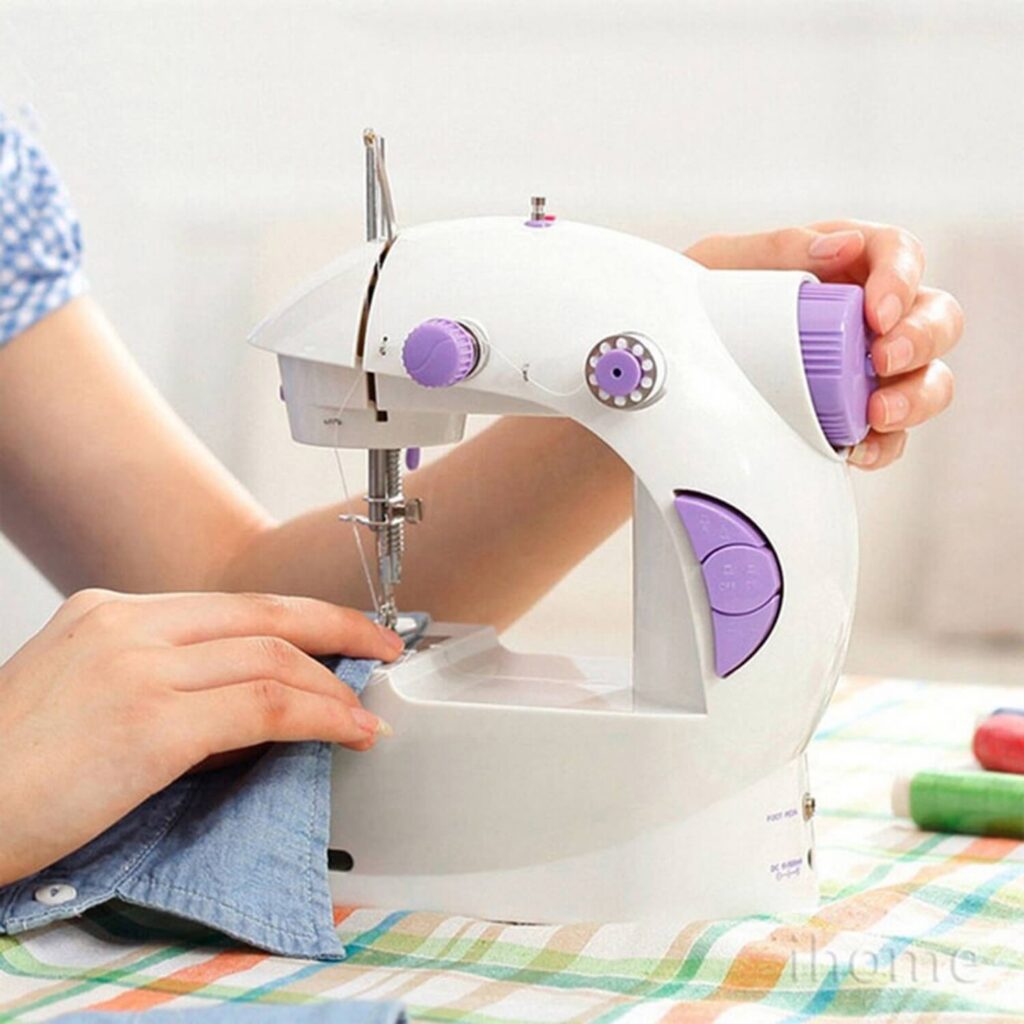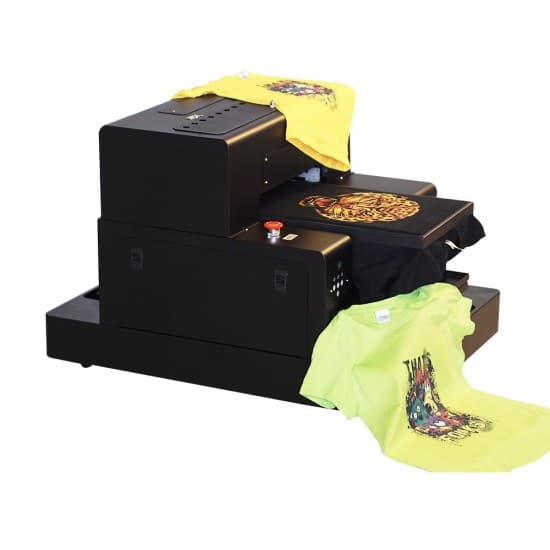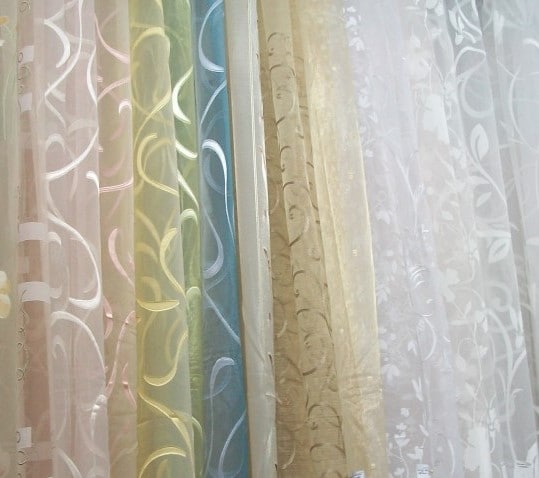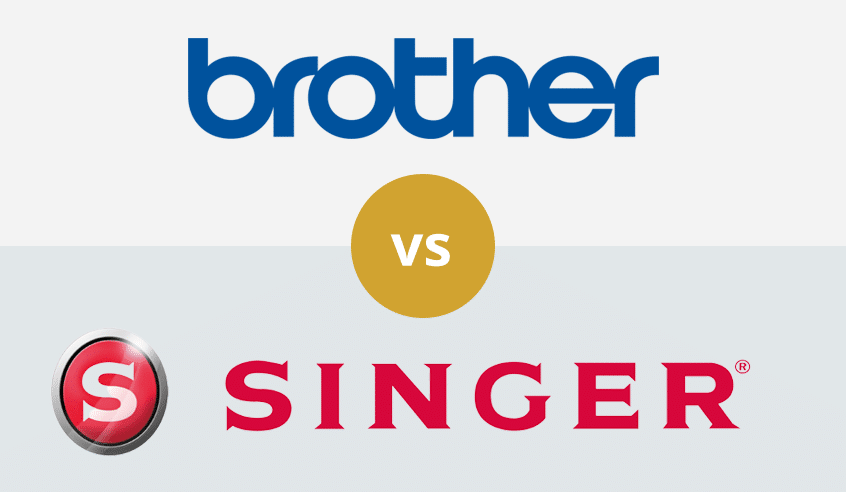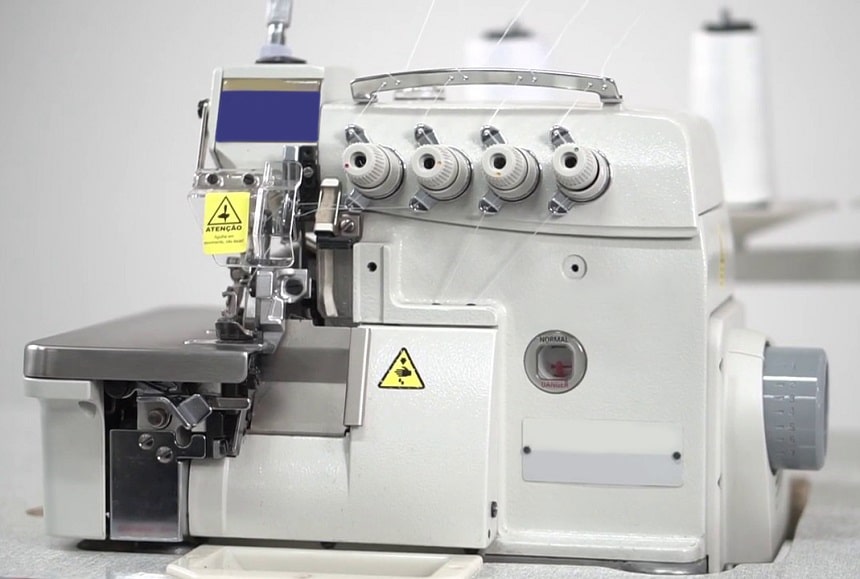

Do you want your clothing items finished with perfect hem? The fact is that even an amateur tailor with basic sewing skills can form a multiple row stitch and make sewn items look like they were done by professionals. However, you need the right machine, a coverstitch machine. With the best coverstitch machine, you can stitch hems like a pro, but how to pick the reliable one?
We understand that this can be a cumbersome process given that the coverstitch machine market is quite extensive. With the myriads of such device options to choose from, you need to consider features that are the most ideal for your sewing projects. In this article, we have reviewed eight of the best coverstitch machines while considering factors such as: thread number, sewing speed warranty information, stitch length and width, and the number of needles so that we can guide your next coverstitch machine purchase.
More features: differential feed ratio, seem tightening system, vertical needle drop, soft cover included
Coming from a renowned brand for making top of the line, quality, and value for money stitching machines, the Janome CoverPro 900CPX deserves its spot in this review. This coverstitch machine is built for efficiency, durability, and convenience. Spotting a 25-year warranty, the Janome CoverPro 900CPX is built to last to give you value for money.
This coverstitch machine also spots other efficiency features, including; a 1000 spm speed that is just the right range for standard sewing projects, a free arm, and a seam tightening system, which enhance the usability of this machine. The seam tightening seam is a Janome trademark feature that reduces the slack on the looper thread to produce some of the best flat and strong stitches on any type of fabric set before it.
The Janome CoverPro 900CPX is also fitted with a conveniently vast bed space for a more efficient sewing motion. Still, on convenience, this coverstitch machine comes with a Quick Reference Chart that saves you time that would be spent reading the manual.
This Janome coverstitch machine also comes with size 14 needles, a Janome CoverPro 900CPX instructional DVD, and a Janome needle threader as part of its accessories.
What is most surprising about the Janome CoverPro 900CPX coverstitch machine is that it comes at quite an affordable price range despite its qualities.
What we liked: For us, it has to be its combination of efficiency features, including its trademark seam tightening system and free arm system. The 25-year warranty, which is the highest we have seen for a coverstitch machine, is also quite impressive. Sewing speed and stitching accuracy are very impressive. We also enjoyed thorough instructions that won’t leave newbies wondering.
What could be better: Despite its efficiency, this Janome coverstitch machine model has a relatively older design
More features: 10 mm foot lift, handwheel, adjustable foot pressure, exterior thread cutter, looper threading
The Juki MCS-1500 is a top range coverstitch machine that is worth every penny of its high price tag. Its features make it ideal for domestic projects and professional stitching to take your stitching to the next level.
It spots a stitching speed of 1350 spm, making it among the highest on this compilation. Add that to its efficiency features, including; a presser foot lifter, a differential feed that can be adjusted, an external thread cutter, and a presser foot with adjustable pressure, and you have the best home coverstitch machine designed to improve your sewing experience and performance significantly.
This Juki coverstitch machine is also fitted with convenience features that aid your sewing process and improve your sewing experience. That includes features such as its high presser foot, which is set at its tip that allows for easy insertion of fabric before you start sewing. Reaching a height of 10 mm, its presser foot enables you to sew thick layers of fabric with ease, not to mention varied stitching patterns, including; the three and four wide coverstitch and the chain stitch patterns.
The Juki MCS-1500 is also easy to use as it spots features such as its simplified looper threading, which can be adjusted by the push of a button, and an extension plate engraved with a seam guide. It also has a presser guide for your presser foot on either side. These features make it ideal for a learner on coverstitch sewing to get you to that professional level in no time.
And as for its durability, the manufacturer offers it with a five-year warranty, which shows their assurance of the quality of their product.
What we liked: Its user-friendly features drew us to this coverstitch machine spotting an external thread cutter, adjustable presser foot pressure, adjustable differential feed, a 10mm high presser foot adjustment and a presser foot lifter. It can work longer hours without overheating and thicker fabrics can be treated easily with this coverstitch machine.
What could be better: This Juki coverstitch machine is quite expensive.
More features: adjustable presser foot pressure, looper threading, color coded threading, 2 needles, differential feed
Best coverstitch machine budget pick is the term that comes to mind when talking about the Brother 2340CV coverstitch machine. This quality coverstitch machine combines durability (25-year warranty) and efficiency at a cost that could only be described as a steal.
The Brother 2340CV machine spots a sturdy metal frame with 2-3-4 cover stitch functions that allow you to work on stretch fabric conveniently, necklines and hems effectively. At a speed of 1100 stitches per minute this cover stitch machine is quite fast and will help you complete your sewing projects in good time. Get to adjust the brother coverstitch between 3mm to 6mm width and a 2mm to 4mm length conveniently with easy-to-use dials on the machine. This also widens the range of fabrics that you can work on using the brother coverstitch machine. Speaking of convenience, the Brother 2340CV spots a looper threading system that is quick and easy to use that enables a lay-in threading. This convenience feature is enhanced by a colour-coded threading guide, which is ideal for decorative sewing projects.
With such features, the Brother 2340CV coverstitch machine would be ideal for sewing beginners and hobbyists to efficiently work on simple small-scale projects while giving you that professional stitching outcome. It is a model coverstitch machine for varying projects including decorative sewing, creation of garments, tape binding and so on.
What we liked: First, we are very impressed with how easy it is to thread and use this coverstitch machine. Second, the price makes it a very efficient buy. And for the rest the motor is less noisy than expected, motor power is quite high and hems look professional.
What could be better: Its adjustable stitch length and width is hard to use, which makes this coverstitch machine occasionally slip stitches.
More features: automatic lubrication, differential feed, push-button stitch regulation, silicone-based needle cooling, 2-3 needles, 7 mm presser foot lift
The Consew CN897CV-1 is the best industrial coverstitch machine, and for a good reason. This coverstitch machine is designed for high performance and to last you a long time of service.
Spotting a stitching speed of 6000 spm, this is the highest we have seen yet on a coverstitch machine. The fast speed allows you to work on extensive projects with ease. Such a coverstitch machine would be ideal for professional users who deal with multiple sewing projects within a limited time frame. It also comes with an entirely automated lubrication system that is continuously filtered by an inbuilt system that is replaceable. So the high performance is not a hindrance factor on the durability of the Consew CN897CV-1 machine. As a matter of fact, the manufacturer of this machine is confident about the durability of their product so much that they offer it with a ten-year warranty.
You can also conveniently regulate your stitches with the push of a button using this coverstitch machine. Not forgetting its differential feed that has a micrometric adjustment for more accurate sewing and sturdy seams.
Surprisingly, the Consew CN897CV-1 is also fitted with noise suppression technology that dampens the machine’s sound and vibration while sewing at high speeds so you can rest assured of a comfortable working environment. Its electric thread wiper, tape cutter and thread trimming systems eases your work while improving on efficiency.
What we liked: 6000 stitches per minute is an impressive figure which makes the Consew coverstitch machine the highest performing machine in this compilation. We are not forgetting its features meant to improve the coverstitch quality that includes a micrometric adjustment differential feed and adjustable stitching by the press of a button.
What could be better: Its high price tag makes this coverstitch machine out of reach for the average coverstitch machine user.
More features: LED light, looper cover accessories, 3 needles, manual needle threader, differential feed, colour-coded threading
The Bernette Funlock 42 is a versatile and reliable coverstitch machine that is designed to give you quality and range for your sewing projects. Designed to handle three cover stitches ranging from 2.8 to 5.6 mm and a chain stitch, you get to expand your sewing options with this machine. With the Bernette Funlock 42, you can comfortably sew hems, edges and cuffs and is ideal for knitted and stretchy fabric, thus making it suitable for versatile projects.
This coverstitch machine is also designed to be user-friendly spotting features such as; 87mm working space for adequate stitching movement, an easy to use looper threading and needle threader systems that are separate and a LED light to illuminate your working area. It also comes with four threads for more robust and more professional stitches.
That’s not all for the Bernette coverstitch machine as it is a durable design that comes with a ten-year warranty distributed among its mechanical, labour and electric facets.
What we liked: We found this machine’s user-friendly features to be quite impressive, including its vast working space, LED light system, and easy to use needle and looper threading structures.
What could be better: We found the Bernette Funlock 42 to be quite noisy when it reached high speeds, which is a downer for a machine of its caliber.
More features: differential feed, 4×5.5-in bed space, seam tightening system, 3 needles, 4×5.5-in bed space, adjustable foot pressure, vertical needle drop, free arm
Coverstitch machine technology has never seen innovation like the Janome 1000CPX. Using the trademark CoverPro technology this coverstitch machine is the perfect balance between the Janome coverpro 2000cpx and the Janome cover pro 900cpx as it combines the industrial and home coverstitch designs to create the ultimate best of both worlds.
It is quite large when talking about coverstitch machines, which gives you a relatively large bed space for eased access and free motion while sewing.
Its size and innovative design makes the Janome 1000CPX ideal for versatility in your stitching projects, giving you a variety of stitching options and is useful for a wide range of sewing projects.
It’s not just about range for the Janome 1000CPX coverstitch machine. Get to achieve professionally finished stitches with its innovative design, an advanced needle system (Schmetz ELX705), free arm configuration, wide trip cover hemstitch and a spring seam tightening system that reduces slack in the looper thread.
And to top it all off, the Janome manufacturer is so confident of the quality of this coverstitch machine that they offer it with a 25-year warranty, making it worth its high price tag.
What we liked: The innovative design of the Janome 1000CPX is one of a kind as it combines the domestic and professional coverstitch machine technology to give you convenience, efficiency and reliability. We were also captivated by its 25-year warranty which goes to express the level of confidence in the reliability and durability of this machine. Features like seam tightening system and adjustable foot pressure are a great add to any sewing machine.
What could be better: It requires precise instructions following and leaves no space to improvisation with stitches
More features: double needles, differential feed, 6 mm presser foot lift, looper threading, heavy duty cutting system, LED light, soft cover included
Do not let its size fool you; the Consew 14TU858 is a high performing portable coverstitch machine designed to serve your coverstitch needs efficiently and for a long time. It spots a differential feeding system that is used for gathering and reduces stretching and puckering of fabric for a more elegant coverstitch finish.
Get to accurately and quickly thread your machine with its auto tension release mechanism. Speaking of ease of use, the Consew 14TU858 spots a color-coded threading system for convenient threading and mastering. And to top it all off on the threading mechanism, this coverstitch machine spots an easy, fast looper threading.
This coverstitch machine’s convenience features are not only limited to its threading system, as it also spots electronic speed control, an adjustable presser foot pressure, and an in-built storage section for your accessories. Also, get a better view of your working area with the Consew’s inbuilt LED light. The Consew 14TU858’s electric system is innovatively designed to cut power through its micro-switch cover when the cover is open to ensure that you, as well as the machine’s system, are safe.
The Consew 14TU858 also gives you range with its variety of thread combinations that widens the variety of stitching options that includes decorative stitching, overedging, plain and cross seaming, braiding, and pintucking.
Its ten-year warranty assures you that the Consew 14TU858 is worth its price tag.
What we liked: It is a high performing and reliable coverstitch machine with all the competitive features that is portable is quite ideal for the professional sewer that is always on the go. Bright LED lights make this machine very convenient to use. This coverstitch is also one of the safest to use.
What could be better: Most users struggle to start working with it due the complicated instructions
More features: self-adjusting tension system, 7 presser feet included, color-coded threading, 14 stitches, LED light
The SINGER Professional 14T968DC is an all-purpose serger with coverstitch designed to offer quality, durability, and convenience for that smooth sewing experience with optimum results. Coming from the renowned Singer manufacturer, this machine is specially made to handle stretchy hems and overcasting to eradicate fraying at the edges for specific materials.
With that, you can comfortably use this coverstitch machine for a variety of stitching options, including; cover hems, rolled hems, sewing seams, basic hems, and decorative edges, to mention a few. This also means that you get versatility on your sewing projects. This coverstitch machine gives you 2,3,4, or 5 thread usage in a single go to improve on variety. Thus making it ideal for super stretchy fabric and consequently the best coverstitch machine for swimwear in this compilation.
The SINGER Professional 14T968DC stitches at a speed of 1,300 spm, which is ideal for both professional and domestic projects for extremely reliable results. It is designed to ease your sewing experience as it spots an automatic tension system that you can operate by the simple turn of a dial to set the tension. Also, you can expand your creativity with this machine’s adjustable cutting length and width.
Add those features to the SINGER Professional 14T968DC’s 25-year warranty, and you have a proper coverstitch machine investment on your hands.
What we liked: The SINGER Professional’s efficiency features are quite impressive, but we were particularly captivated by its threading features, more so its number of threads that extend from 2,3,4 to 5. Thus making this machine the most ideal for extra stretchy and elastic fabric.
What could be better: Prior experience with a coverstitch machine is necessary to operate the SINGER Professional 14T968DC, leaving out learners and beginners.
If you are reading this, it is likely that you are already aware of what a coverstitch machine can do for your sewing outcomes. But just to recap, a coverstitch is the last line of stitching defense to prevent tearing from mechanical stress when you put that shirt or those pants on. It is what professional brands use for the quality of their sewn clothes. And you can achieve the same results from the comfort of your home with a coverstitch machine. But this can only be achieved with the right coverstitch machine.
If you are ever observant of the detail on your clothing, you might have noticed those two or three parallel rows of seams on your clothing’s edge. They are quite nice looking, but that is not what they are there for. Their function is way more advanced.
A coverstitch machine ensures that your hems are professionally finished with more than a single stretchable row of seams, usually at the edges of your clothing. These row seams enhance a stitch’s integrity as they stretch with the fabric, they are stitched on to allow flexibility when you wear and generally stretch the clothes.
A coverstitch hem is the ultimate protection on the edges of clothing from the mechanical stress they experience while on your body or while getting cleaned. A proper coverstitch enables the edge to expand and contract without tearing. Due to its application, a coverstitch is ideal for stretchy fabric such as sweatshirt fabric, lycra, fleece, aerobic wear, knit fabric, and aerobic wear.
A coverstitch machine is a mechanical object, which means that it will not serve you as well as you need it to if not properly utilized. That means that there are a few technical issues that you should be aware of and take care of before you put your coverstitch machine into action.
First, you have to ensure that you have the right needles specific to your coverstitch machine. The needles tend to vary in terms of size and design; hence the needles at hand will determine whether or not you get to make a cover stitch. Next up is to set the needles firmly into their designated slots within the machine. Then check for lint and thread remains within the plates and make sure that they are clear. Also, always remember to lift the presser foot to release the tension plates before threading your coverstitch machine.
You can knot a new thread to the old one if the machine was already threaded; if it is a new thread, then always begin from the lower looper. The next step in preparing your coverstitch machine to thread the needles, after which you should pull the thread extensions away from the machine. Make sure that the thread is adequate for whatever project you have. It is also advisable that you do a practice run to ensure that the tension, the differential fit, the stitch length, and the presser foot pressure are to your liking.
To make your cover stitch, raise the presser foot, and slip the fabric underneath it. That is after making the intended crease for your cover stitch. Lower the presser and commence sewing.
Once you have made your cover stitch, you have to finish it for that professional look and to ensure the integrity of the coverstitch. This can be a little tricky, but it all depends on how you use your coverstitch machine. For finishing a coverstitch on the round, the following procedure will suffice.
As you get close to your coverstitch starting point, stop and cut the extraneous thread tails. Then make two or three stitches over your stitch starting point. Stop stitching and raise your needles above the fabric by turning the handwheel towards your direction. Next, raise the presser foot to enable you to move the material towards you by one or two stitches. Then lower your presser foot to make two or three stitches that ensure that the stitch ends are strong.
Raise the needles and lift the presser foot once more. While in this position, slip a needle between the needle shaft and thread above the presser foot and pull some slack towards your direction. While holding the slack, pull the fabric away from the presser foot and to the left while holding the chain off. There will be two thread loops from the fabric’s inner part and two straight threads on the top side. Cut the straight threads, which should be extending from the machine. Then pull the loops so that the threads are all secured on the backside of the fabric. And finally, clip the thread tails close to the fabric, and you have yourself a complete professional coverstitch.
Price is a fundamental factor when buying a cover stitch machine, especially after seeing how much they averagely cost. The first consideration when looking at price is, can you afford it? How much are you willing to spend on a coverstitch machine, and will it be worth it?
Depending on your personal requirements for a coverstitch machine, we recommend that you spend as much as you comfortably can, considering that the right coverstitch machine is basically an investment. The highest billed coverstitch machine is highly likely designed with advanced features in durability, reliability, and efficiency, which means that they will last you a long time and serve you better than its lower-priced counterparts. If you are into professional sewing, consider saving up to afford that high-quality coverstitch machine, and you are guaranteed to get your money’s worth and more. The size of the warranty helps to ensure that your coverstitch machine is a secure investment. Twenty-five years is the highest warranty we have seen for a coverstitch machine, making machines such as: SINGER Professional 14T968DC, Janome 1000CPX, Brother 2340CV, and the Janome CoverPro 900CPX the highest valued coverstitch machines in this compilation. They are an indication of their manufacturers’ confidence in the quality and durability of their product.
This does not, however, mean that there are no excellent budget coverstitch machines. Machines such as the Brother 2340CV are quite efficient and reliable at an affordable price. Such would be ideal for sewing hobbyists in handling small-time home projects.
To this point, you know what makes the best coverstitch machine. However, you need to know which is the best coverstitch machine for you. That is a machine within your funding capabilities and one that will serve your specific sewing needs and help you proficiently handle those domestic or professional sewing projects. That is why you need to consider the following factors before making that coverstitch machine purchase.
Six thousand stitches per minute. That is the highest stitching speed in this review spotted by the Consew CN897CV-1 coverstitch machine. If you are looking for a coverstitch machine to handle professional projects, then you should consider such a machine. The stitch speed determines how many tasks you can conveniently finish within a short time. For a professional sewer, the number should be a lot, and though it may cost you a little extra, it would be a worthy investment.
For a hobbyist sewer seeking to take their sewing game to the next level, then an average stitch speed is ideal. Hence you get to purchase a coverstitch machine for a relatively lesser price to serve your sewing needs.
What is the nature of your sewing projects? This is the question you need to answer when considering the number of threads as a coverstitch machine factor. The number of threads on a coverstitch machine is usually two to three. This determines the number of parallel rows of seams you can create on hems. Two is usually enough for basic projects, but if you intend to work on heavy-duty or stretchy fabric, more threads are the way to go. Super flexible material such as swimwear needs more stitch rows to ensure sturdy hemming.
The SINGER Professional 14T968DC provides up to five threads. If you are looking for sturdy hemming on extra stretchy fabric, then this is definitely what you are looking for.
For a coverstitch machine, the best guarantee is the warranty. The higher the warranty, the better the guarantee. This is because the warranty is the manufacturers’ assurance that their product will serve you as long and as well as they claim it will. Of course, this also means that it will cost you a bit more; but with the possibility of returning a product if it is defective within a limited period of 25 years, it is quite an investment.
Speaking of which coverstitch machines including: Janome 1000CPX, Janome CoverPro 900CPX, Brother 2340CV, and the SINGER Professional 14T968DC indicate the highest warranties in our review at 25 years. Notice that the Janome brand has two coverstitch machines with a 25-year warranty. This goes to show the level of quality that this brand produces. However, it would help if you were keen on the warranty details as they cover specific aspects of the machine, such as the mechanics.
Do you intend to move around a lot with your coverstitch machine, maybe from your working area to your house on a daily basis? If yes, that size and weight definitely matter. In this case, you will need a more portable coverstitch machine; that is, a machine that is smaller and lighter.
From our assessment above, the Consew 14TU858 is the most ideal in terms of portability spotting dimensions that measure 11.8 x 12.2 x 12.5 inches.
This may not seem to be a significant consideration, but it actually is. Noise in your coverstitch machine makes a significant difference in the efficiency, durability, and overall work experience of a coverstitch machine. The Consew CN897CV-1 is one coverstitch machine that offers these gains with its noise suppression features.
Less noise means that the machine’s engine is running smoothly, the needles and thread are adjusted to exact positions, and the machine’s moving parts are well lubricated. This not only gives you peace of mind while you work but also ensures your machine’s longevity and reliability.
This feature is, however, a little bit tricky to identify without putting the machine to work. Well, that is why you have reviews like this. A little research and inquiry from the experts would go a long way in this respect.
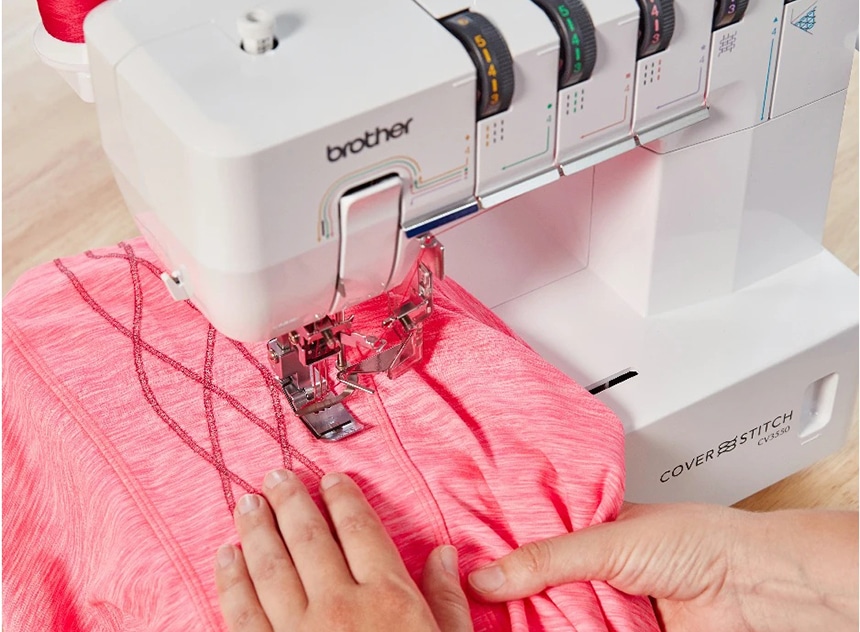
These features are dependent on your intended sewing projects. Different stitch lengths and widths are ideal for a specific fabric and sewing project. For instance, less permanent or decorative sewing requires longer stitches. Heavy fabric also utilizes longer stitch lengths. On the other hand, fine and stretchy fabric requires shorter stitch lengths, and the shorter, the better, considering that shorter stitch lengths make sturdier and more reliable stitches.
As for the stitch width, a wider stitcher is ideal for making buttonholes, dealing with raw edges and blind hemming.
Therefore, before procuring that coverstitch machine consider the nature of your projects in terms of material, design, and so on. Then buy a coverstitch machine that will best fulfill your stitching needs.
If you have prior experience using a coverstitch machine, this is not a significant factor for you, but it still improves your sewing experience. This factor entails inbuilt features designed to help ease how you use the coverstitch so that you can focus more on your project rather than setting the machine to function.
These features include machine aspects such as thread tension, adjustable presser foot, and free arm, just to name a few. The thread tension is particularly important for beginners since it can be a bit challenging to set. However, you can get a coverstitch machine with self-adjusting thread tension. Also, an adjustable presser foot conveniently enables you to make accurate stitching, especially on heavy fabric.
On the other hand, a free arm eases blind hemming of long fabric while sewing cuffs and sleeves. Coverstitch machines such as the Janome CoverPro 900CPX and the Janome 1000CPX are well equipped with this feature.
Other coverstitch machines, such as the Bernina coverstitch machine, which is not part of this review, go over and beyond in easing your sewing experience. Spotting features such as touch screen controls, lighting, and a serger and coverstitch machine combination to give you the ultimate coverstitch machine convenience. However, it will cost you a little extra, though it is worth it.
For a coverstitch machine, certain accessories are essential to its functionality, while others enhance this. Always be on the lookout for accessories before making an order for that coverstitch machine; the more, the better.
The accessories include a seam guide, a cleaning kit, repair equipment, and other attachment accessories such as needles and thread spool caps. A manual is also an essential accessory which you should be on the lookout for as it is essential in guiding your use and facilitating troubleshooting when the need arises. Most coverstitch accessories are not easily accessible on their own; thus, it is always ideal to have as many accessories as you can from the coverstitch machine you purchase.
The working area of a coverstitch machine is relatively more extensive than a serger machine’s working area. A serger spots two thread loopers while a coverstitch machine has one. The stitching needles on a coverstitch machine are three, while a serger machine is typically fitted with two.
The CoverPro 900CPX is our top pick because this coverstitch machine encompasses everything you would need in a coverstitch machine today. We were particularly impressed by its combination of efficiency features, including its trademark seam tightening system, free arm, vast bed space, and a quick reference chart.
Our second pick is the Juki MCS-1500. This coverstitch machine is designed with top-of-the-line user-friendly line features including its adjustable presser foot pressure, adjustable differential feed, and external thread cutter, among others. You may have to dig deeper into your pockets, but it’s all worth it.
Brother 2340CV is our budget pick for the best coverstitch machine review. It may be the only coverstitch machine that will give you a quality experience and stitching efficiency features at its price range. These features include adjustable stitch length and width, various stitching options, a 25-year warranty, and easy-to-use threading system.
